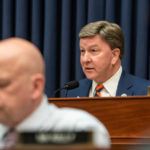
The House Armed Services Committee unveiled its “Asia-Pacific Region Priority Act” Monday afternoon, previewing several requests for studies, recommendations to the Defense Department and “sense of Congress” provisions that will be incorporated into the National Defense Authorization Act and future standalone language. After six months of hearings and meetings, Reps. Randy Forbes (R-Va.) and Colleen Hanabusa (D-Hawaii) wrapped up this phase of their work in an attempt to answer the questions, “what is Asia-Pacific? What would a pivot entail?” Hanabusa…













